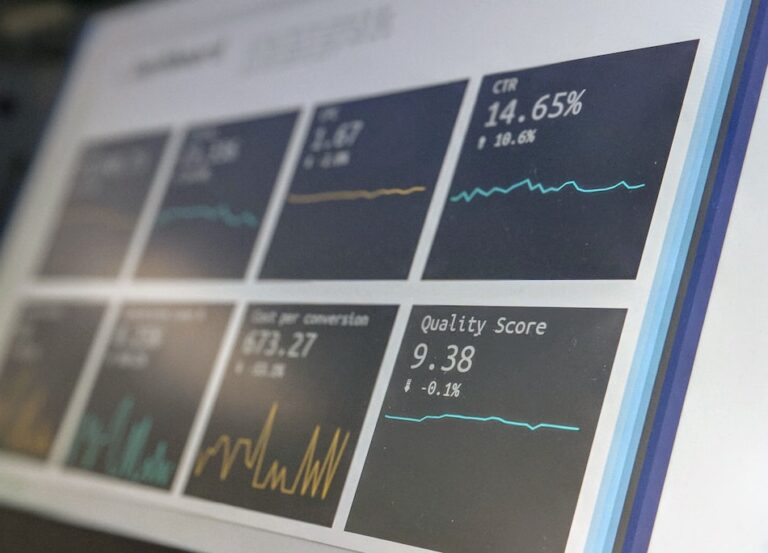Legal Implications
In an era where digital interfaces are ubiquitous, the legal landscape surrounding website accessibility has become increasingly intricate. This complexity is not merely a byproduct of technological advancements but a reflection of society’s evolving understanding of inclusivity and equal access.
ADA and Other Laws
The cornerstone of legal frameworks in the United States concerning digital accessibility is the Americans with Disabilities Act (ADA). Initially enacted in 1990, the ADA has undergone various amendments to encompass the realm of digital accessibility. It mandates that all websites and digital platforms be accessible to individuals with disabilities, thereby ensuring a more equitable digital landscape.
Beyond the American borders, international guidelines such as the Web Content Accessibility Guidelines (WCAG) offer a global perspective on accessibility standards. These guidelines serve as a touchstone for businesses and organizations aiming for international reach, providing a harmonized set of criteria that transcends national legislation.
Legal Consequences of Non-Compliance
Non-compliance with accessibility laws and guidelines can result in severe repercussions, both legal and financial. Lawsuits pertaining to website inaccessibility have surged in recent years, serving as cautionary tales for organizations that neglect this crucial aspect of their digital presence. These legal actions not only result in financial penalties but also tarnish the brand’s reputation, creating a ripple effect that can be detrimental to business sustainability.
Thus, it is not merely the avoidance of legal consequences that should motivate businesses to prioritize accessibility, but also the broader implications for brand integrity and social responsibility.
Social and Ethical Responsibility
In the labyrinthine corridors of the digital world, social and ethical responsibility often serve as the moral compass guiding businesses and organizations. The imperative for website accessibility is not merely a legal mandate but also a reflection of an institution’s commitment to social justice and inclusivity.
Expanding Audience Reach
Accessibility is not a niche concern; it is a universal one. By investing in accessible web design, businesses can tap into a broader demographic, including the approximately 15% of the global population who live with some form of disability. This is not merely an act of altruism but a strategic move that can significantly expand a brand’s reach and impact.
Statistics reveal that the number of people with disabilities is not trivial; it is a significant portion of the global populace. Ignoring this demographic is not just socially irresponsible but also a missed business opportunity.
Building Goodwill and Brand Reputation
Corporate social responsibility extends beyond philanthropy and sustainability; it encompasses the very fabric of how a business interacts with its stakeholders. Companies that prioritize accessibility are often viewed as socially responsible, earning them not just customer loyalty but also a favorable brand image.
Brands like Microsoft and Apple have set benchmarks in the industry by integrating accessibility features into their products, thereby elevating their brand reputation. Such initiatives resonate with consumers, creating a halo effect that benefits the company in multiple dimensions.
User Experience and Usability
The discourse surrounding website accessibility often gravitates towards legal mandates and ethical imperatives. However, an equally compelling facet is the transformative impact of accessibility on user experience and usability. This is not a peripheral benefit but a central tenet that amplifies the efficacy of digital platforms for all users.
Benefits to All Users
Contrary to the prevailing notion that accessibility features serve a limited demographic, these enhancements often transcend disability classifications. Features such as clean design, intuitive navigation, and text-to-speech capabilities benefit a wide array of users, including the elderly, those with temporary impairments, and even users in challenging environments.
For instance, high-contrast text and easily navigable layouts are not just beneficial for visually impaired users but also enhance readability for everyone. This universality of benefits underscores the symbiotic relationship between accessibility and overall user experience.
Increasing Conversion Rates
From a business standpoint, the merits of an accessible website extend beyond social responsibility and legal compliance. Enhanced user experience invariably leads to higher conversion rates, be it in terms of sales, user engagement, or customer retention.
Case studies have consistently demonstrated that websites with superior accessibility features tend to outperform their less accessible counterparts in key performance indicators (KPIs). This is not mere coincidence but a testament to the integral role that accessibility plays in optimizing user interactions.
Technological Trends Making Accessibility Easier
As we traverse the ever-evolving landscape of digital innovation, it becomes increasingly evident that technology is not merely a tool but an enabler. This is particularly salient in the context of web accessibility, where technological advancements are not just facilitating compliance but are actively shaping more inclusive digital experiences.
AI and Automation
Artificial Intelligence (AI) has emerged as a pivotal force in automating and enhancing accessibility features. From automated captioning services to intelligent screen readers, AI technologies are democratizing access in unprecedented ways. These advancements are not merely incremental but transformative, altering the very paradigms of what is possible in web accessibility.
Moreover, AI-driven analytics can provide invaluable insights into user behavior, enabling more personalized and accessible user experiences. This confluence of automation and intelligence serves as a catalyst for more robust and inclusive digital platforms.
Advances in Assistive Technologies
While AI serves as the brain behind automated accessibility, advancements in assistive technologies act as the limbs, providing tactile and sensory experiences that make the digital world more navigable for individuals with disabilities. Innovations such as haptic feedback systems, eye-tracking software, and advanced voice recognition are redefining the boundaries of digital accessibility.
These technologies are not isolated developments but are part of a larger ecosystem that synergizes with web design and AI capabilities. The result is a more holistic approach to accessibility that considers not just the interface but the human interaction with that interface.
Financial Incentives
The calculus of web accessibility extends far beyond the realms of legality and ethics, penetrating the financial dimensions of business operations. While the initial investment in accessibility may appear as an added cost, a nuanced understanding reveals it as an investment with substantial returns.
Government Grants and Tax Benefits
Various jurisdictions offer financial incentives to encourage businesses to make their digital platforms more accessible. These range from government grants to tax benefits, effectively offsetting the initial costs of implementing accessibility features. Such incentives not only ease the financial burden but also serve as an acknowledgment of the societal value of accessible web design.
Return on Investment
Accessibility should not be perceived as a sunk cost but rather as an investment with quantifiable returns. The benefits manifest in diverse ways, from increased user engagement and customer loyalty to reduced legal risks. When these factors are monetized, it becomes evident that the return on investment (ROI) for accessibility is not just positive but potentially substantial.
Moreover, the financial gains are often long-term, creating a sustainable advantage that compounds over time. This makes the ROI not just a numerical value but a reflection of an organization’s commitment to inclusivity and social responsibility.
Conclusion
In the intricate tapestry of the digital age, web accessibility emerges not as an isolated thread but as a vital pattern that shapes the entire design. As we have navigated through the legal imperatives, social responsibilities, user experience enhancements, technological innovations, and financial incentives, it becomes unequivocally clear that web accessibility is not a mere adjunct but a central pillar in the architecture of the digital world.
It is a legal necessity, safeguarding businesses from potential litigations and penalties. It is an ethical responsibility, reflecting an organization’s commitment to social justice and inclusivity. It is a user experience enhancer, elevating the usability of digital platforms for a diverse audience. It is a beneficiary of technological advancements, which are making it increasingly feasible to implement. And lastly, it is a financially prudent decision, offering a positive return on investment that extends beyond mere numbers.
As we continue to forge ahead in this digital-first era, the call to action is clear: businesses and organizations must prioritize web accessibility, not as an afterthought but as a pre-requisite for digital excellence.

 Photo by
Photo by  Photo by
Photo by  Photo by
Photo by  Photo by
Photo by  Photo by
Photo by 

